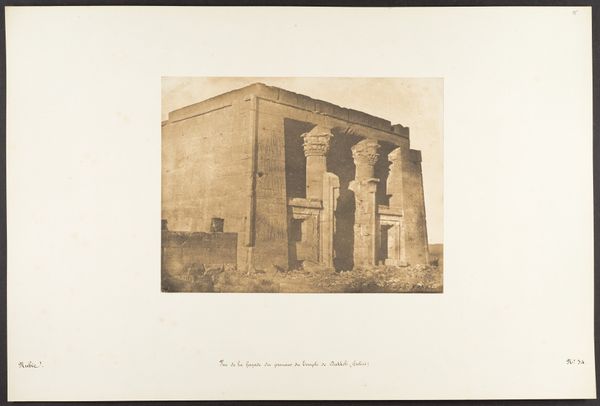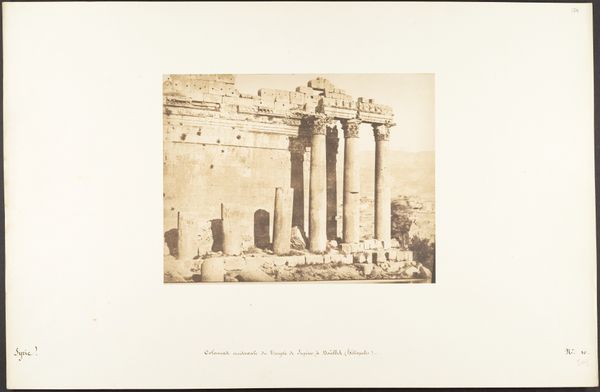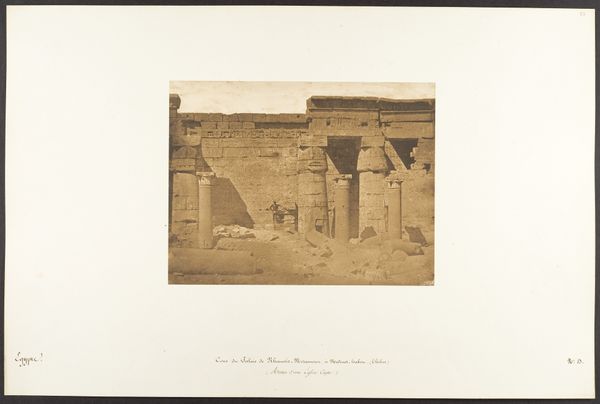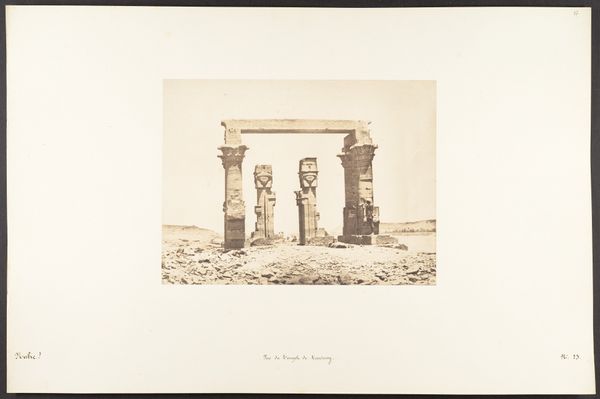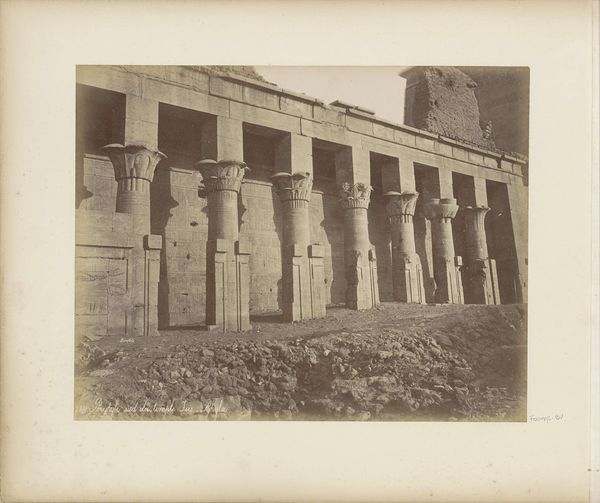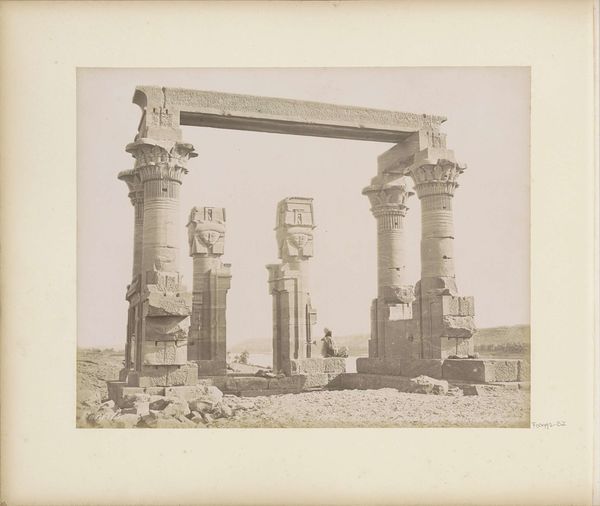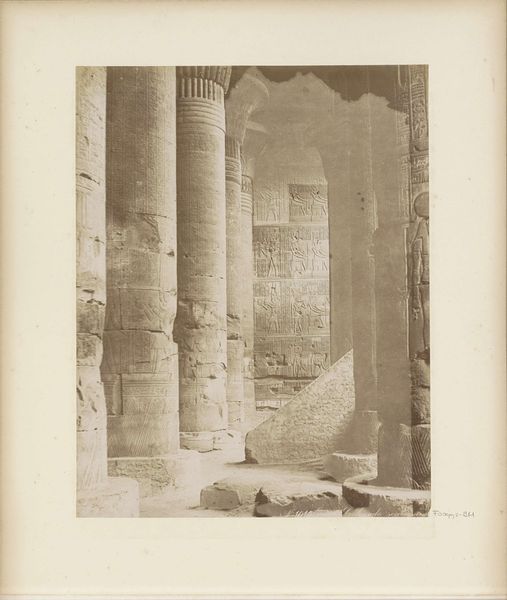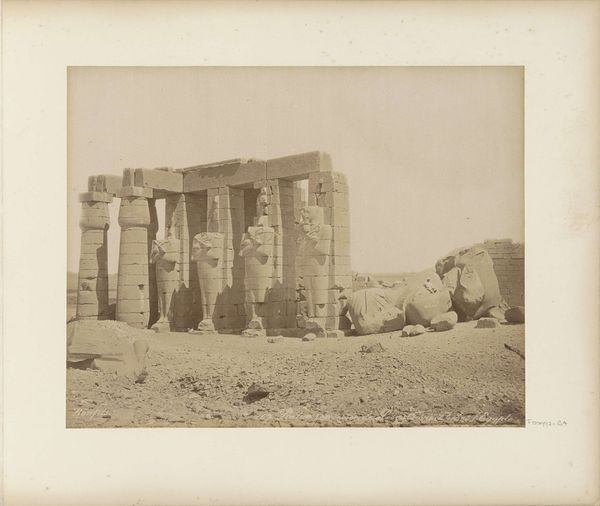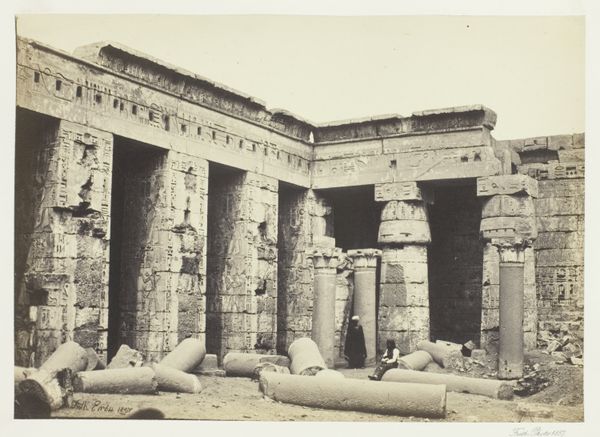
photography, architecture
#
landscape
#
ancient-egyptian-art
#
photography
#
ancient-mediterranean
#
arch
#
architecture
Dimensions: Image: 6 7/8 in. × 9 in. (17.5 × 22.9 cm) Mount: 12 in. × 15 3/8 in. (30.5 × 39.1 cm)
Copyright: Public Domain
Editor: This striking photograph, "The Memnonium or Rameseiom, Thebes," taken between 1852 and 1855 by Robert Murray, presents such a stark landscape. It's as if the photographer was deliberately documenting the crumbling glory. What particularly stands out to you? Curator: It’s more than documentation, wouldn't you say? To me, Murray captured the quiet poetry of ruins, doesn't he? Notice how the light caresses the colossal statues, these echoes of a forgotten era. One can almost feel the weight of centuries settling in the dust, no? It reminds me of those melancholic poems, elegies for lost empires. Ever get that feeling? Editor: Absolutely. I think that, in turn, adds a certain gravitas. I can definitely feel it and hear it. The details, like the fallen pillars, feel symbolic too. What statement might Murray be trying to make with this composition? Curator: Maybe about the impermanence of human ambition, Editor. Or perhaps something more profound. He offers us, through this carefully composed ruin, a sort of mirror. "Look," he seems to whisper, "even the grandest designs of men eventually return to dust." Think of Ozymandias, that iconic sonnet. It's more about life's cyclical journey of destruction and resurrection. Editor: That’s a good point! I like thinking of the Ozymandias poem in connection to this work. So the focus isn't solely on ruin, but on the possibilities embedded within that cyclical nature? Curator: Exactly! These are not just dead stones, these statues. See them more as seeds of the future! Something powerful slumbers within, waiting to be reimagined by the winds and the sands of time. That's what Murray captured: a possibility hidden in plain sight. What a testament to human endurance. Editor: It gives one a lot to think about – what a new and interesting way to see things. Thanks!
Comments
No comments
Be the first to comment and join the conversation on the ultimate creative platform.
